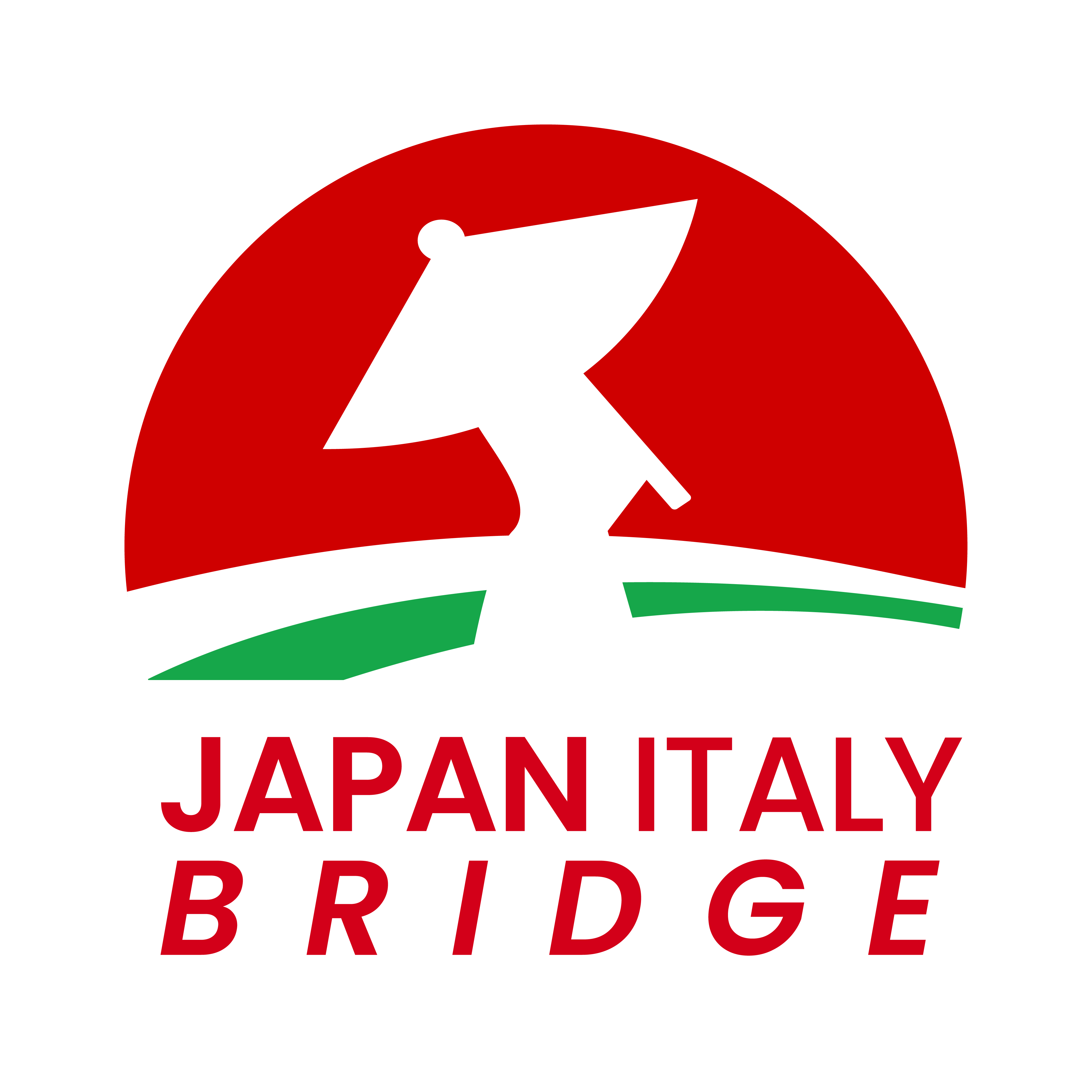Case Study: How Japan Uses Culture and Environment to Conquer the World
Japan is not just advanced technology, sushi and samurai: it is also a leader in environmental and cultural diplomacy. Through targeted strategies, the Land of the Rising Sun has been able to intertwine tradition and innovation to strengthen its global influence. But how did Japan use culture and sustainability as tools of soft power? Let's find out together.

Environmental Diplomacy: A Concrete Commitment
Japan has always had a deep relationship with nature, a bond that is reflected in its philosophy of life and its environmental policies. After the Fukushima disaster in 2011, the country accelerated the transition to renewable energy, investing in innovative solutions such as solar energy, hydrogen and sustainable resource management.
One of the most interesting examples is the "Cool Biz", a government initiative launched in 2005 to reduce energy consumption in offices: less air conditioning and a more informal dress code to promote energy saving. This project has had a great impact, significantly reducing CO2 emissions and becoming a model for other nations.
Internationally, Japan leads numerous environmental conservation projects, including supporting Southeast Asian countries in the fight against marine pollution and the sustainable use of ocean resources. Furthermore, with the "Tokyo Protocol", Japan has taken a central role in global climate policies, promoting concrete solutions to address climate change.

Culture as a Tool for Soft Power
In addition to sustainability, Japan has been able to export its culture in a strategic way. The global rise of anime, manga, Japanese cuisine and traditional arts such as Noh theater and the tea ceremony is no coincidence. These elements have become vehicles of cultural diplomacy, captivating the world and strengthening the "brand" of Japan abroad.
A case in point is the success of Cool Japan, a government initiative that supports the spread of Japanese culture through cinema, music, fashion and technology. This program has made Japan a point of reference for the global creative industry, attracting millions of tourists and investors.
The 2020 Tokyo Olympics were also an exceptional showcase for Japanese cultural diplomacy. Despite the challenges of the pandemic, Japan was able to show the world its capacity for innovation, sustainability and hospitality.

A Model to Follow?
The Japanese approach to environmental and cultural diplomacy demonstrates that soft power can be an effective weapon to influence global politics without the use of force. A model that many countries are starting to observe with interest.
In an era in which environmental and cultural challenges are more relevant than ever, Japan continues to chart a path that combines tradition, innovation and a concrete commitment to the future of the planet. An example to study, but above all to imitate.
Sake: Three Fun Facts About Japan's Iconic Drink
Sake is more than just an alcoholic beverage; it is a true piece of Japanese culture, closely tied to the history, traditions, and even spirituality of the Land of the Rising Sun. Although it is often referred to as “rice wine,” its production is unique and its significance goes far beyond simple taste. When talking about rice-based beverages, the ideogram sake [酒] generally refers to alcohol, but is pronounced shu. When the Japanese talk about beverages made with rice, they use the term nihonshu [日本酒], which means “drink of Japan.”
Now, get ready to discover three fascinating facts that will make you see sake in a whole new light!

1. Sake is not a distilled beverage
Many people believe that sake is similar to liquor or spirits, but in reality, its production process is closer to that of beer. The rice used is first polished to remove impurities, then steamed and fermented using a special fungus called koji. This turns starches into sugars, allowing the yeast to start the alcoholic fermentation.
The result? A drink with a complex and delicate flavor, with an alcohol content of between 13% and 16%. And if you thought there was only one type of sake, think again: there are lighter, unfiltered, sparkling and even aged varieties!

2. A connection to the sacred
Sake is not only a pleasure for the palate, but also a deeply rooted element in Japanese religious traditions. Ancient legends say that even the gods appreciated it: the storm god Susanoo-no-Mikoto is said to have defeated a dragon by offering it eight barrels of sake.
To this day, the drink is still used in Shinto rituals, especially at weddings and in offerings to the kami (Japanese deities). During some festivals, such as the Doburoku Matsuri, unfiltered sake is distributed to participants, creating a link between the sacred and conviviality.

3. Sake etiquette
It is not enough to fill a glass and drink, sake has a real code of conduct. Traditionally, it is drunk in small ceramic cups (choko) or in elegant wooden boxes (masu). But there is one golden rule: never pour it yourself! It is an impolite gesture, while pouring it for others is a sign of respect and sharing.
Temperature also matters: in the winter it can be enjoyed hot, while in the summer months it is more appreciated fresh or even cold. Each serving method brings out different aromas, making each sip a unique experience.
A toast to tradition!
Sake is not just a drink, it is a journey into Japanese culture. Next time you have the opportunity to taste it, remember to raise the cup and toast with a traditional "Kanpai!" – and maybe surprise your friends with these curiosities!
Our relationship with Sake
Japan Italy Bridge has often dedicated itself to the promotion of sake, carrying out numerous initiatives, including the Bunka Academy. The goal was to raise awareness in Italy of how to appreciate sake, emphasizing that it is not a grappa, but a real wine. It is not a drink to be consumed only at the end of a meal, but to be enjoyed throughout the dinner. Unlike wine, sake does not cover the flavors of dishes, but enhances them. For this reason, Japan Italy Bridge has organized events in collaboration with Japanese experts, who have shared with the public the history, the production process and the secrets of consuming and preserving sake.
If you are curious, we invite you to take a look at our portfolio and discover all the collaborations we have carried out.
IKEA and Starbucks: The Secret to Their Success in Japan
When two global giants like IKEA and Starbucks decide to conquer the sophisticated Japanese market, the key to their success lies in one word: localization. But how did these giants enter the hearts and homes of Japanese consumers? Let's find out together.

IKEA: A Strategic Return
IKEA first entered Japan in 1974, but the adventure ended in 1986 due to a lack of understanding of local preferences. However, the Swedish giant did not give up. In 2006, after careful analysis, it returned with a renewed strategy. It adapted the dimensions of its furniture to align with the smaller living spaces typical of Japanese homes and introduced specific products, such as tatami and traditional tableware, respecting local customs. It also changed the shopping experience, offering delivery and assembly services, aware that many Japanese customers do not own vehicles suitable for transporting bulky furniture. This attention to detail has made IKEA a reference point for furniture in Japan.

Starbucks: The Art of Cultural Integration
Starbucks opened its first store in Tokyo in 1996, bringing with it not just coffee, but an entire experience. To win over Japanese consumers, the company introduced unique drinks inspired by local flavors, such as matcha latte, and created environments that reflected Japanese aesthetics, using traditional materials and minimalist design. It also respected the importance of seasonality in Japanese culture, launching limited-edition products during local holidays. This fusion of tradition and innovation has made Starbucks a beloved and frequented place throughout the country.
Lessons in Localization
Both companies have shown that to succeed in a foreign market, it is not enough to replicate a successful model elsewhere. It is essential to immerse yourself in the local culture, understand its nuances and adapt the offering to the specific needs of consumers. This approach not only facilitates brand acceptance, but also creates an emotional connection with the public, which is essential for loyalty.
IKEA and Starbucks are prime examples of how a well-thought-out localization strategy can turn challenges into opportunities. Their ability to respect and integrate Japanese cultural elements into their offerings has allowed them to thrive in a demanding and competitive market. For any company aiming to expand globally, the lesson is clear: listening, observing and adapting are the keys to success.
Effective communication is essential for every company or project. Japan Italy Bridge was born with the aim of connecting and promoting Italian companies in Japan and Japanese companies in Italy, offering tailor-made solutions to amplify your visibility and strengthen your brand. Thanks to our team of experts and a network of qualified collaborators, we develop customized communication and marketing strategies, providing all the tools necessary to tell your story in the most effective and engaging way.
Our services:
Art Direction – We create a strong and coherent visual identity.
Content Creation – We produce quality content to best tell your brand story.
Digital & Influencer Marketing – Targeted digital strategies and collaborations with influencers.
Social Media Management – Management and optimization of social channels.
Event Creation & Management – Organization of exclusive events for your business.
Branding – Construction and strengthening of the company image.
Web Design – Development of modern and functional websites.
Find out more about our projects and how we can help you grow: Japan Italy Bridge
The Forgotten Artist of Osaka: The Magic of Nakamura Hōchū
When we talk about the Rinpa school of art, we often think of the great names of Kyoto, but there was one artist who managed to make this style shine in Osaka too: Nakamura Hōchū. His life remains shrouded in mystery, but what is certain is that he was an innovator capable of reinterpreting tradition with his own touch.
Hōchū began his career immersed in the cultural environment of Osaka, a lively city full of artistic stimuli. Initially influenced by the Nanga style, he loved to hang out with poets and scholars, including Kimura Kenkadō, with whom he shared a passion for beauty and nature. But the real turning point came when he discovered the works of Ogata Kōrin, one of the great masters of the Rinpa school. It was love at first sight: the vibrant colors, elegant shapes and refined composition won over Hōchū, who decided to dedicate himself to this style, reinterpreting it in an original way.

Photos: Wikipedia
His most famous work, the "Kōrin Gafu", is a true celebration of Rinpa. It is an illustrated book that collects paintings of flowers, landscapes and scenes of daily life, created with extraordinary elegance and lightness. But unlike his predecessors, Hōchū added a playful and spontaneous touch to his creations, making them more accessible and dynamic. His style, while respecting the canons of Rinpa, had a freshness that still distinguishes him today.

Photos: Wikipedia
What makes Hōchū fascinating is precisely his ability to be faithful to tradition without being repetitive. His works almost seem to dialogue with the viewer, telling stories through fluid lines and bright colors. It is no coincidence that his works have ended up in the collections of important international museums, where they continue to enchant art lovers and scholars.
Today, the name of Nakamura Hōchū may not be among the most well-known when it comes to Japanese art, but his contribution to the spread of the Rinpa style was fundamental. His ability to innovate without distorting, to make an ancient artistic language modern, makes him an artist to be rediscovered and admired. If you happen to see one of his works, stop and observe it carefully: you could discover an unexpected side of Japanese art.
Discovering the three great variations of soba in Japan
Soba, the traditional buckwheat noodles, is one of the most iconic dishes of Japanese cuisine. Although it is widespread throughout the country, each region has developed its own variant, with unique characteristics that make it special. Here are three of the most famous versions that are worth trying during a trip to Japan!

1. Togakushi Soba – The mountain delicacy of Nagano
In the heart of the Japanese Alps, the Nagano region is renowned for the quality of its soba, especially that of Togakushi. This version stands out for its artisanal preparation and presentation: the noodles are served cold on a bamboo tray called “zaru”, accompanied by a soy-based sauce (tsuyu) and often enriched with grated daikon and wasabi. The purity of the mountain water used in the preparation contributes to giving it a fresh and refined flavor.
2. Izumo Soba – The Intense Flavor of Western Japan
Originating in Shimane Prefecture, Izumo soba has a firmer texture and bold flavor thanks to the use of whole buckwheat flour, which retains the grain’s dark color and natural aroma. A distinctive feature of this variety is its serving method: often presented in “warigo,” three small stacked containers, into which sauce and condiments are poured directly, creating a mix of flavors with every bite.
3. Wanko Soba – A Unique Iwate Food Experience
More than just a dish, Wanko soba is a culinary challenge. Unique to Iwate Prefecture, this specialty involves serving small portions of soba in individual bowls, which are continually refilled by the staff until the diner gives up. It’s a fun and interactive experience, perfect for those who want to challenge themselves while enjoying the authentic taste of this regional variety.

If you are a fan of Japanese cuisine, trying these three versions of soba is an unmissable opportunity to discover the gastronomic diversity of the country. Each region offers not only a unique flavor, but also a cultural experience that enriches every trip! You can take advantage of our proposals and offers by clicking HERE: Your Japan will make your mouth water!
The Most Effective Marketing Strategies in Japan
Japan is a unique market, where tradition and innovation intertwine to create original and effective marketing strategies. Understanding Japanese consumer behavior is essential for those who want to succeed in this fascinating country. Here are five winning strategies to conquer the Japanese public.

1. Experiential marketing: engagement first
Japanese consumers love to live immersive experiences before purchasing a product. Interactive events, pop-up stores and practical demonstrations are highly appreciated tools. Brands such as Shiseido and Sony often organize immersive experiences to allow customers to test products first-hand, thus strengthening the connection with the brand.
2. Collaborations with local influencers and idols
Japanese influencers, known as "Key Opinion Leaders" (KOL), play a key role in purchasing decisions. YouTubers, streamers and pop idols have a huge following and enjoy great credibility. Collaborating with them through reviews, sponsorships and targeted campaigns can guarantee a significant impact on the public.
3. Packaging and eye-catching design
Aesthetics are of immense value in Japan. A well-designed packaging can make the difference between a successful product and one that goes unnoticed. Many brands invest in elaborate packaging inspired by local culture or the philosophy of "kawaii" to attract consumers' attention.

4. Omnichannel strategies for a seamless experience
Integration between physical stores and digital platforms is essential. Successful brands in Japan offer a seamless experience between e-commerce, social media and traditional stores. Big names like Uniqlo allow customers to buy online and pick up in store, creating a convenient and efficient purchasing ecosystem.
5. Subtle but effective advertising approach
Unlike other markets, aggressive advertising in Japan is often counterproductive. Companies prefer refined messages, emotional storytelling and content that enhances the quality of the product rather than direct sales techniques. Poetic TV commercials and minimalist digital campaigns are among the most appreciated by the public.
Adapting to the peculiarities of the Japanese market means adopting targeted strategies, respectful of local preferences and capable of creating an authentic connection with consumers. Understanding these elements can make the difference between a successful entry and a misstep in a market as demanding as it is fascinating.
Effective communication is essential for every company or project. Japan Italy Bridge was born with the aim of connecting and promoting Italian companies in Japan and Japanese companies in Italy, offering tailor-made solutions to amplify your visibility and strengthen your brand. Thanks to our team of experts and a network of qualified collaborators, we develop customized communication and marketing strategies, providing all the tools necessary to tell your story in the most effective and engaging way.
Our services:
Art Direction – We create a strong and coherent visual identity.
Content Creation – We produce quality content to best tell your brand story.
Digital & Influencer Marketing – Targeted digital strategies and collaborations with influencers.
Social Media Management – Management and optimization of social channels.
Event Creation & Management – Organization of exclusive events for your business.
Branding – Construction and strengthening of the company image.
Web Design – Development of modern and functional websites.
Find out more about our projects and how we can help you grow: Japan Italy Bridge
Discovering Japan's Most Fascinating Temples
Japan is a land where the sacred intertwines with the everyday, and temples are the ultimate expression of this. Each structure tells centuries of history, mysticism and art, offering visitors a journey through time and spirit. Follow us as we discover 5 iconic temples, unmissable stops on our Your Japan Premium Tour!

1. Kinkaku-ji – The Golden Pavilion (Kyoto)
Hidden among lush gardens and ponds, Kinkaku-ji seems to have come out of a fairy tale. Its golden walls sparkle under the sun, creating a breathtaking reflection in the surrounding pond. Originally an aristocratic villa, it became a temple in the 14th century and has enchanted everyone who visits it ever since. A walk in its zen gardens gives a sense of peace and wonder.

2. Senso-ji – The beating heart of Asakusa (Tokyo)
In the heart of frenetic Tokyo, Senso-ji represents a spiritual oasis. This Buddhist temple, the oldest in the city, welcomes visitors with the majestic Kaminarimon gate and its giant red lantern. Crossing the lively Nakamise-dori, among stalls selling traditional sweets and souvenirs, you reach the main hall, where the statue of the goddess Kannon watches over the faithful. Here, tradition and modernity blend together in a unique atmosphere.

3. Fushimi Inari Taisha – The path of a thousand gates (Kyoto)
This famous Shinto shrine is known for its infinite red torii that snake up the mountain. Each gate was donated by companies and individuals as a sign of gratitude and good luck. Walking along the path, surrounded by soft light and the sounds of nature, is a mystical experience that seems to transport you to another dimension.

4. Todai-ji – The giant of Nara
This monumental temple houses the bronze statue of the Great Buddha, 15 meters high and among the most impressive in the world. Walking among its enormous wooden columns, admiring the majesty of the structure and meeting the sacred deer in the surrounding park is an unforgettable experience.

5. Kiyomizu-dera – The panoramic balcony over Kyoto
Famous for its imposing wooden terrace suspended on the hill, Kiyomizu-dera offers a spectacular view of the city. Built without the use of nails, this temple has a special energy, especially in spring with the cherry trees in bloom and in autumn when the leaves are tinged with red.
Travel with Your Japan
Every visit to the land of the Rising Sun is an opportunity to be enchanted by its timeless beauty. Why not join us on a journey to discover not only its spirituality, but also its extraordinary duality between modernity and tradition?
With the Premium Tour by Your Japan Tour, you will live an exclusive experience along the Golden Route, exploring over 8 iconic cities including Tokyo, Kyoto, Osaka, Yokohama, Nara, Himeji and Nagoya. You will discover breathtaking landscapes, centuries-old temples and futuristic districts, immersing yourself in local customs and the most authentic gems of Japan. Thanks to our All Inclusive package, you will not have to think about a thing: transport, accommodation and over 20 cultural experiences are included, with the assistance of our experts for a stress-free and emotion-filled trip.
Summer dates available:
June 26, 2025 ~ July 10, 2025
August 5, 2025 ~ August 21, 2025
eptember 2, 2025 ~ September 16, 2025
Choose the perfect date for you and get ready to embark on an unforgettable adventure! ✨
Discover all the details here:Your Japan Tour
Case Study: Uniqlo, the Global Strategy Model of a Japanese Fast Fashion Giant
Uniqlo is not simply a fast fashion brand, but a true case study of successful global strategy. Founded in 1984 in Japan, the company has been able to stand out in a saturated market thanks to an innovative business model and a clear philosophy: offering quality clothing at affordable prices, without chasing ephemeral trends.

The Essence of Uniqlo Strategy
Unlike competitors such as Zara and H&M, Uniqlo does not focus on fast fashion and seasonal collections. The heart of its strategy is the concept of "LifeWear": essential, functional and durable garments, designed to adapt to every lifestyle. An approach that reduces the need for continuous collection renewals and creates a bond of trust with consumers.
Vertical Integration: The Secret to Success
Uniqlo directly controls the entire production process, from design to distribution. This vertical integration allows it to maintain competitive prices without compromising quality. It also works with advanced textile companies to develop innovative materials, such as HeatTech technology for thermal clothing and AIRism for lightweight, breathable garments.
International Expansion and Local Adaptation
Internationalization has been a key pillar of Uniqlo's growth. Today, the brand has thousands of stores around the world, with a strong presence in Asia, Europe and North America. Its global success is the result of a perfect balance between brand consistency and adaptation to local preferences. For example, in China Uniqlo has been able to integrate the omnichannel model with a strong digital presence, while in the United States it has focused on iconic flagship stores to strengthen brand awareness.

Minimalist but Effective Marketing
Unlike many fast fashion brands, Uniqlo does not invest heavily in traditional advertising or influencer marketing. Instead, it prefers strategic collaborations with designers and artists, such as the UT line with pop culture-inspired graphics, or partnerships with names such as Jil Sander and Marimekko. A sober marketing, but with a strong and targeted impact.
Sustainability and Social Responsibility
In recent years, Uniqlo has intensified its commitment to sustainability. It has launched initiatives such as recycling used garments and producing eco-friendly materials. It has also improved the transparency of its supply chains, aiming to ensure ethical working conditions in its factories.














